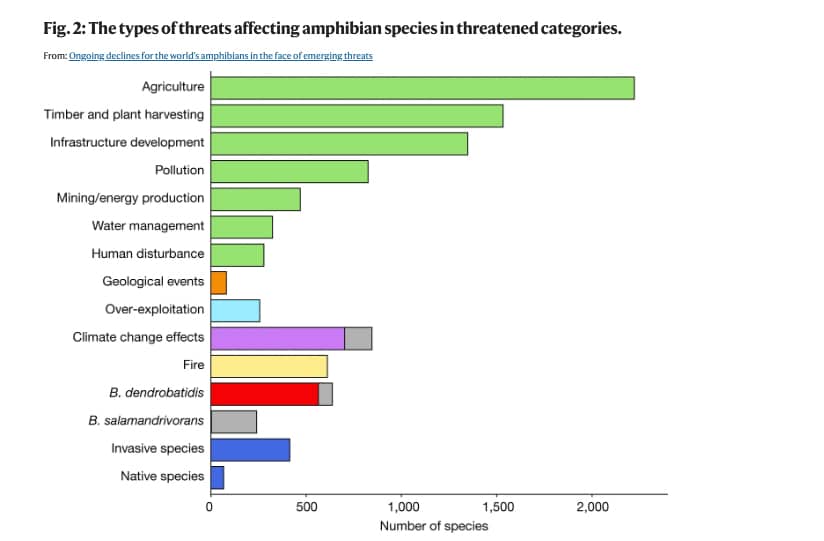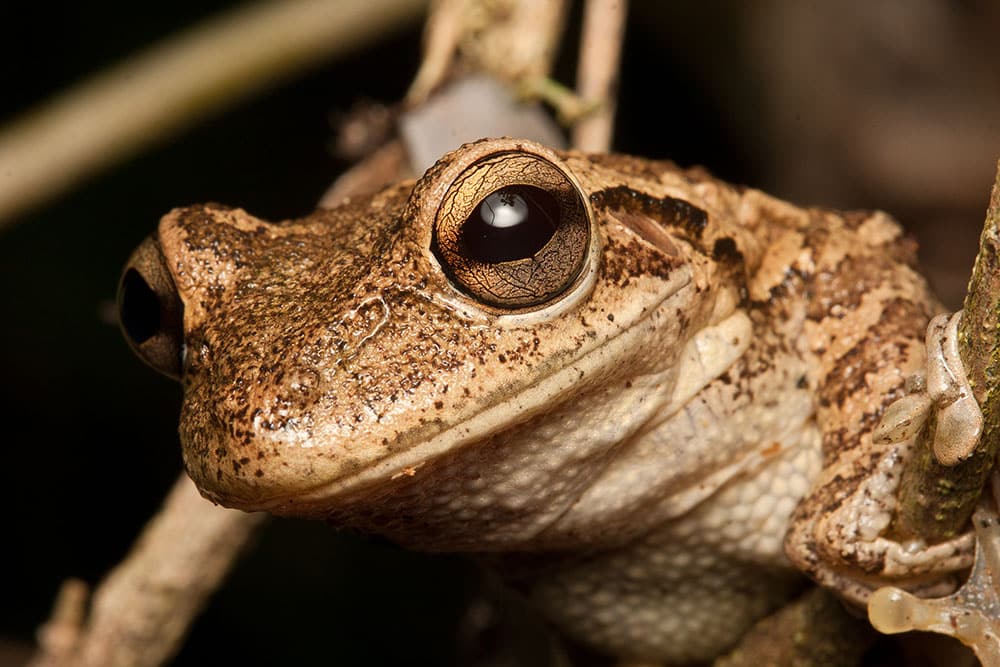Since 1980, 37 amphibian species have gone extinct, with the most recent extinctions being the the Chiriqui harlequin frog and the sharp snouted day frog.
An international team of researchers have released their report on second Global Amphibian Assessment and have said that amphibians are the most threatened vertebrate class, particularly salamanders and those amphibians found in the Neotropics. The researchers say that habitat loss and disease from 1980 to 2004 led to 91 percent status deterioration. They believe that climate change, both projected and ongoing will be a continual concern, with 39 percent of status deteriorations since 2004. Habitat loss is the second factor leading to these declines, with 37 percent status deteriorations since 2004.
The researchers say that the disease chytridiomycosis, caused by Batrachochytrium dendrobatidis is also a culprit that led to the declines in amphibian species.
The researchers took the data of the second Global Amphibian Assessment, which was completed in 2022 and combined it with current information to “re-examine the global status and trends of amphibians and present new insights on threats, providing a crucial update that informs the prioritization, planning and monitoring of conservation actions.”

Fig. 2 The threats to a species were coded using the threat-classification scheme and grouped for ease of comparison (see the ‘Classification schemes’ and ‘Threats to threatened species’ sections of the Methods). All threats shaded in green are causing habitat loss and degradation. The grey sections denote the number of species for which the threat timing is in the future rather than ongoing. Note that most species are experiencing multiple threats.
According to the most recent data, 40.7% of amphibians worldwide (2,873 species) are globally threatened (IUCN Red List categories, critically endangered, endangered, and vulnerable), versus 37.9% (2,681 in 1980) and 39.4% (2,799 in 2004). The areas in which these threatened species live are concentrated in the Caribbean islands, mesoamerica, Tropical Andes, western Cameroon’s mountains and forests, eastern Nigeria, Madagascar, the Western Ghats and Sri Lanka. Following these locations are the Atlantic Forest biome of southern Brazil, the Eastern Arc Mountains of Tanzania, central and southern China, and the southern Annamite Mountains of Vietnam, according to the research paper.
21 Percent Of All Reptile Species Threatened With Extinction, Study Says
Since 1980, 37 amphibian species have gone extinct, with the most recent extinctions being the the Chiriqui harlequin frog (Atelopus chiriquiensis) and the sharp snouted day frog (Taudactylus acutirostris) which went extinct due to the disease chytridiomycosis.
The complete paper, “Ongoing declines for the world’s amphibians in the face of emerging threats” can be read on the Nature.com website.


